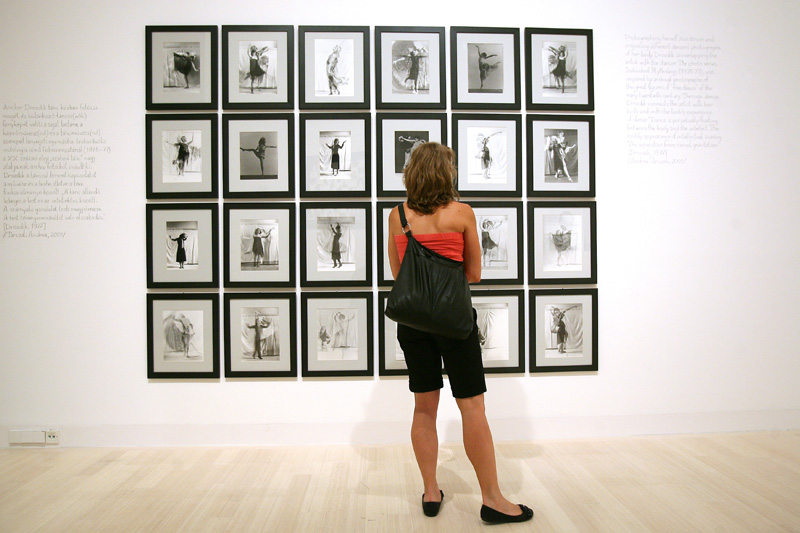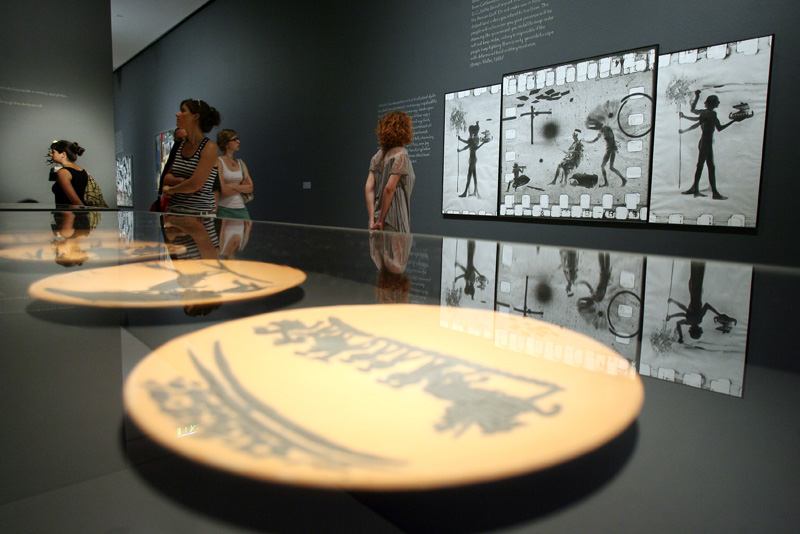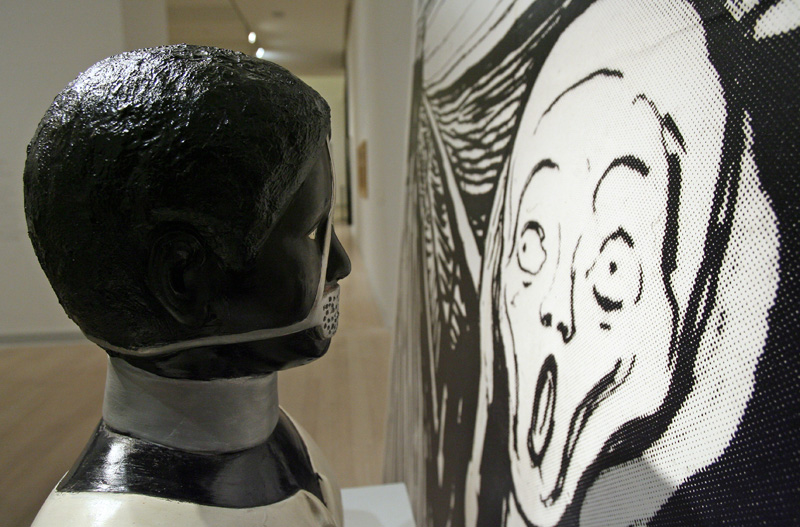July 06, 2012 - October 23, 2012
Where have all the heroes gone? Where are the heroes that we came to know so well from the 19th-century novels? The heroes of romantic narratives, who persevere and even triumph under dire circumstances and in the midst of tribulations. They may (as well) be the soldiers of Pete Seeger's lyrics from the early 1960s, who end their heroic lives in the graveyard. The word 'hero' is outdated; even when discussing literature, we tend to speak of characters instead of heroes. In this regard, one may be amazed at the nearly nostalgic tone of one of the lyrics by the Hungarian underground rock band, Európa Kiadó, which suggests that real heroes can still be found in movies. It may not be a mere coincidence that heroes are said to appear in this very place, as a hero's existence presupposes the presence of a story in the traditional sense. Today, such stories can be found in movies, rather than in novels.
The exhibition derives from the dual role of the Artist; from the intrinsic dialectic whereby artists are often both the creators and the protagonists of their own works. This situation is partly owing to the altered role of the author/creator, namely that an artist no longer seeks to address the viewers from the position of an omnipotent and outsider 'speaker', but intends to enter into a dialogue with the audience. The artist has thus assumed an altered role which resulted in his/her re-positioning within society, partly through the emphatic appearance of the subjective viewpoint, and partly by assuming social roles that were regarded as less significant in earlier times.
These different role-plays bring about a myriad different modes of relationality. An artist may either assume the role of a creator with magical powers, or that of a suffering human being, a socially accepted man or woman, or a designer who approaches society with a critical and often ironic attitude. In order to present all these variations, artists either choose a subjective viewpoint or tend to offer a complete social vision. They may either approach their topic from a disengaged position or suggest their personal involvement. By focusing on these artistic positions and strategies, the exhibition showcases a selection of both the emblematic and the lesser-known art pieces from the Ludwig Museum`s collection. In addition to a number of new acquisitions (László Beke, Imre Bukta, László Csáki, Ion Grigorescu, Katalin Ladik, Allan Sekula, Tamás St.Auby and Tibor Zsolt), the exhibition features rarely seen pieces from the collection (Lourdes Castro, Nat Finkelstein, Alfred Hrdlicka, Péter Molnár, Marta Pan).
Exhibiting artists:
BARANYAY András • BEKE László • BEÖTHY Balázs - NÉMETH Hajnal • Joseph BEUYS • BUKTA Imre • Lourdes CASTRO • Chuck CLOSE • CSÁKÁNY István • CSÁKI László – PÁLFI Szabolcs • Marta DESKUR • DROZDIK Orshi • EL-HASSAN Róza • ERDÉLYI Gábor • FÁTYOL Viola • Nat FINKELSTEIN • Gérard GASIOROWSKI • GÉMES Péter • GERBER Pál • Teodor GRAUR • Ion GRIGORESCU • GULYÁS Gyula • GYENIS Tibor • HAJAS Tibor • Alfred HRDLICKA • Piotr JAROS • KÁROLYI Zsigmond • KELE Judit • Little Warsaw • KOMORÓCZKY Tamás • KONCZ András • LADIK Katalin • MAURER Dóra • MOLNÁR Péter • Ciprian MURESAN • NÉMETH Ilona • NAGY Kriszta • Tatjana NAZARENKO • Marta PAN • Pablo PICASSO • Dmitrij PRIGOV • Arnulf RAINER • Allan SEKULA • ST.AUBY Tamás • Mladen STILINOVIC • SZALAI Tibor • TIBOR Zsolt • TÓT Endre • Rosemarie TROCKEL • Jeanne
van HEESVIJK • Wolf VOSTELL • Andy WARHOL



